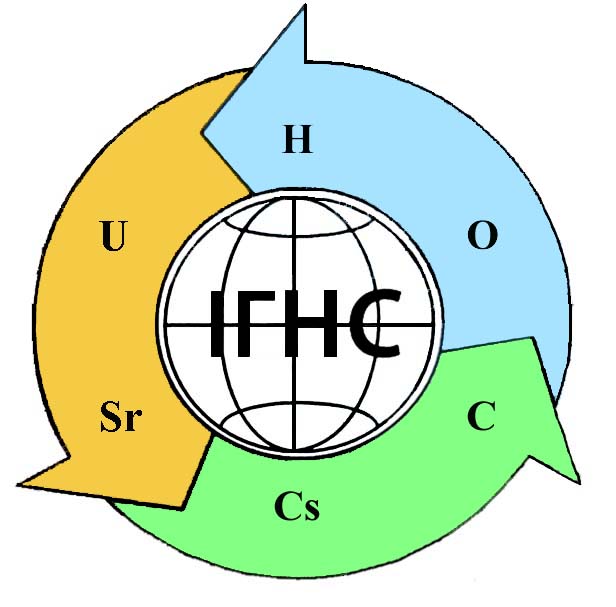DISINFECTION OF DRINKING WATER BY ELECTRIC DISCHARGE PLASMA
DOI:
https://doi.org/10.15407/geotech2021.34.099Keywords:
water, water supply, desinfection, bacteria, plasma, electrical discharge.Abstract
For today, taking into account the low efficiency of the disinfection technologies using chlorine-containing compounds and the growing number of chlorine-resistant microorganisms, the question of introducing alternative methods of disinfection in the field of water supply and drainage is relevant. One such alternative method is the treatment of liquids with plasma of electric discharge. This article describes our experiments on the treatment of different types of water from surface sources in Kyiv and water intentionally infected with Escherichia coli (E. coli). The experiments were performed on a laboratory installation with a circulating pump and an ejector-type reactor with integrated electrodes. In the reactor a water-air mixture is formed, in which an electric discharge takes place. The disinfection reactor and at the same time the device for the formation of a heterogeneous water-air environment is an ejector with electrodes inserted into it, which receive pulses of electric current. Discharges initiate a range of different physicochemical phenomena, such as a strong electric field, intense ultraviolet radiation, shock waves of excess pressure and, in particular, the formation of various highly active chemicals such as radicals (OH •, H •, O •) and molecules ( H2O2, H2, O2, O3). All these physicochemical processes occur during the discharge itself, for example, the formation and action of short-lived radicals, as well as the action of relatively long-lived oxidants. The effect of the concentration of microorganisms on the rate and completeness of water disinfection was studied in technical (tap) water with the introduction into the reaction tank of the washoff from two test tubes. This provided an initial concentration of E. coli of 3.4 ∙ 106 CFU / cm3. Water treatment for 30 seconds reduced the concentration of microorganisms by two orders of magnitude (up to 5.4 ∙ 104). After 1 minute of treatment, this figure decreased to 1.7 ∙ 102, and after 3 minutes to 5.2 CFU / cm3, i.e., the treated water corresponded to norms for almost pure water. Experiments have proven the effectiveness of plasma disinfection, even for liquids with a concentration of microorganisms significantly exceeding the maximum allowable concentrations. The content of microorganisms before and after treatment was determined by the method of limiting dilution of samples with subsequent sowing on a nutrient medium in Petri dishes.
References
Белинский В.В. Импульсный коронный разряд на поверхность электропроводящей жидкости и его использование для обработки воды. В.В. Белинский, И.В. Божко, Д.В. Чарный. Технічна електродинаміка. – 2010. No. 3. P. 21–27.
Божко И.В. Исследование эффективности очистки воды от органических примесей импульсными разрядами / И. В. Божко, Д. В. Чарный. Технічна електродинаміка. 2013. No. 3. P. 81–86.
Bereka V. Efficiency of plasma treatment of water contaminated with persistent organic molecules / V. Bereka, I. Boshko, D. Charny. Journal of Environmental Engineering and Science. 2020. Vol. 15, No. 3. 1-8. P. 91–100.
Божко І.В. SOS-генератор для електророзрядних технологій на основі імпульсного бар’єрного розряду / І.В. Божко, В. І. Зозулев, В. В. Кобильчак. Технічна електродинаміка. 2016. No. 2. P. 63–68.
A. Fridman. Plasma chemistry, Cambridge university press, ISBN 978-0-521-84735-3, 2008.
B.R. Locke, M. Sato, P. Sunka, M.R. Hoffmann, J.S. Chang. Electrohydraulic discharge and nonthermal plasma for water treatment. Ind. Eng. Chem. Res., vol. 20, pp.1-15, 2006 .
Ruma, P. Lukes, N. Aoki, E. Spetlikova, S. H. R. Hosseini, T. Sakugawa and H. Akiyama, Effects of pulse frequency of input power on the physical and chemical properties of pulsed streamer discharge plasmas in water, J. Phys. D: Appl. Phys., vol. 46, pp. 1-10, 2013.
ДСанПіН 2.2.4-171-10. Гігієнічні вимоги до води питної, призначеної для споживання людиною. 2010.
Кашницева М.Л. Перечень рыбохозяйственых нормативов, предельно допустимых концентраций (гдк) и ориентировочно безопасных уровней воздействия (обув) вредных веществ для воды водных объектов, имеющих рыбохозяйственное значение. М. Л. Кашницева, О. А. Черникова, Н. А. Шиленко. М : ВНИРО, 1999. 304 p.
Красовский Г. Н. СанПиН no4630–88. Санитарные правила и нормы охраны поверхностных вод от загрязнения Г. Н. Красовский. 1988.
Захаренко М. О. Санітарно-гігієнічні вимоги до води та водопостачання сільськогосподарських підприємств. Навчальний посібник. М.О. Захаренко, В.М. Поляковський, Л.В. Шевченко. Вінниця :Видавничий центр ВНАУ, 2012. 244 p.
ДСТУ 4808:2007 Джерела централізованого питного водопостачання. Гігієнічні та екологічні вимоги щодо якості води і правила вибирання. 2007.
Антипчук А. Ф. Водна мікробіологія . А.Ф. Антипчук, І.Ю. Кірєєва. К. : Кондор, 2005. 256 p.









